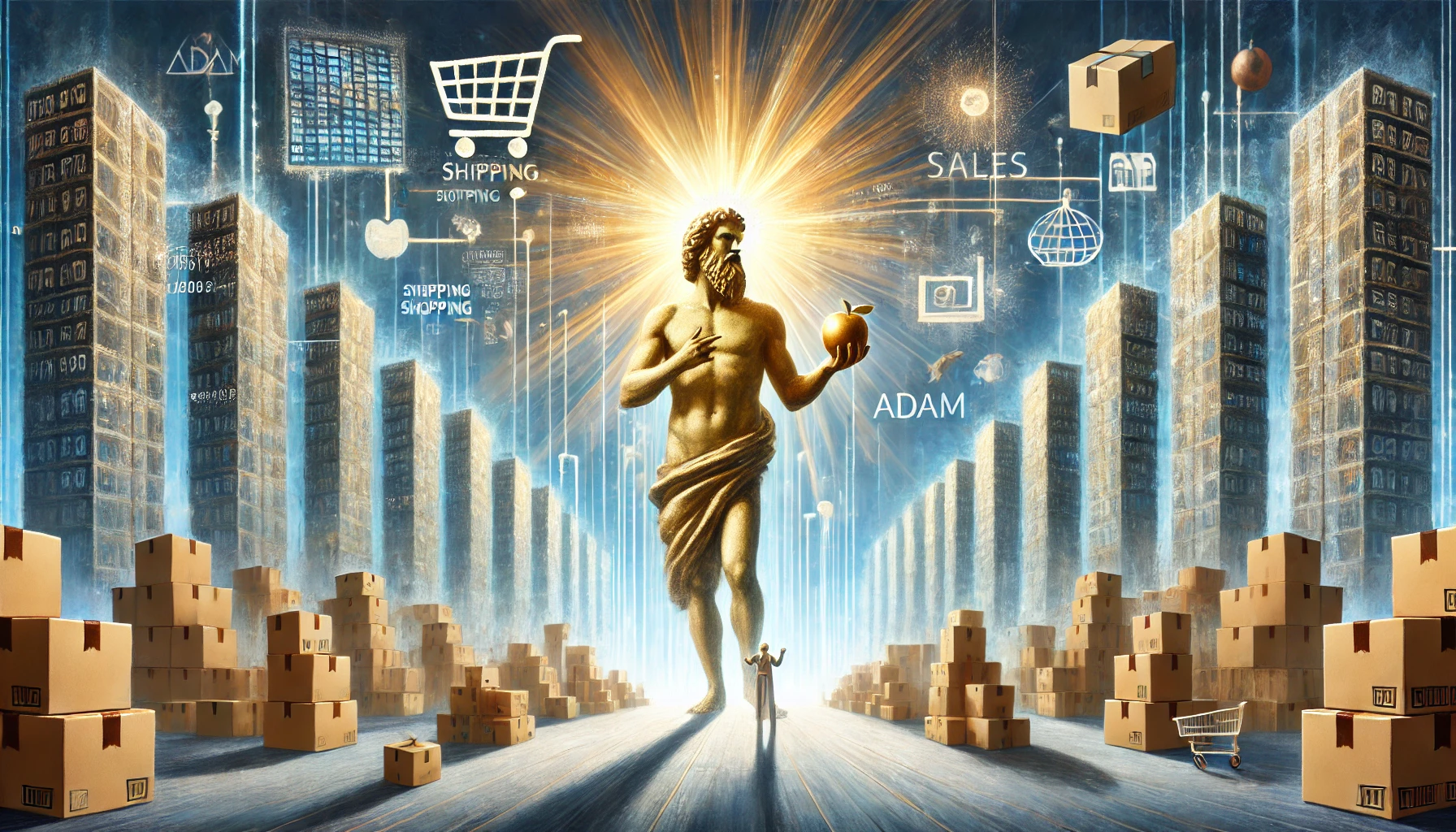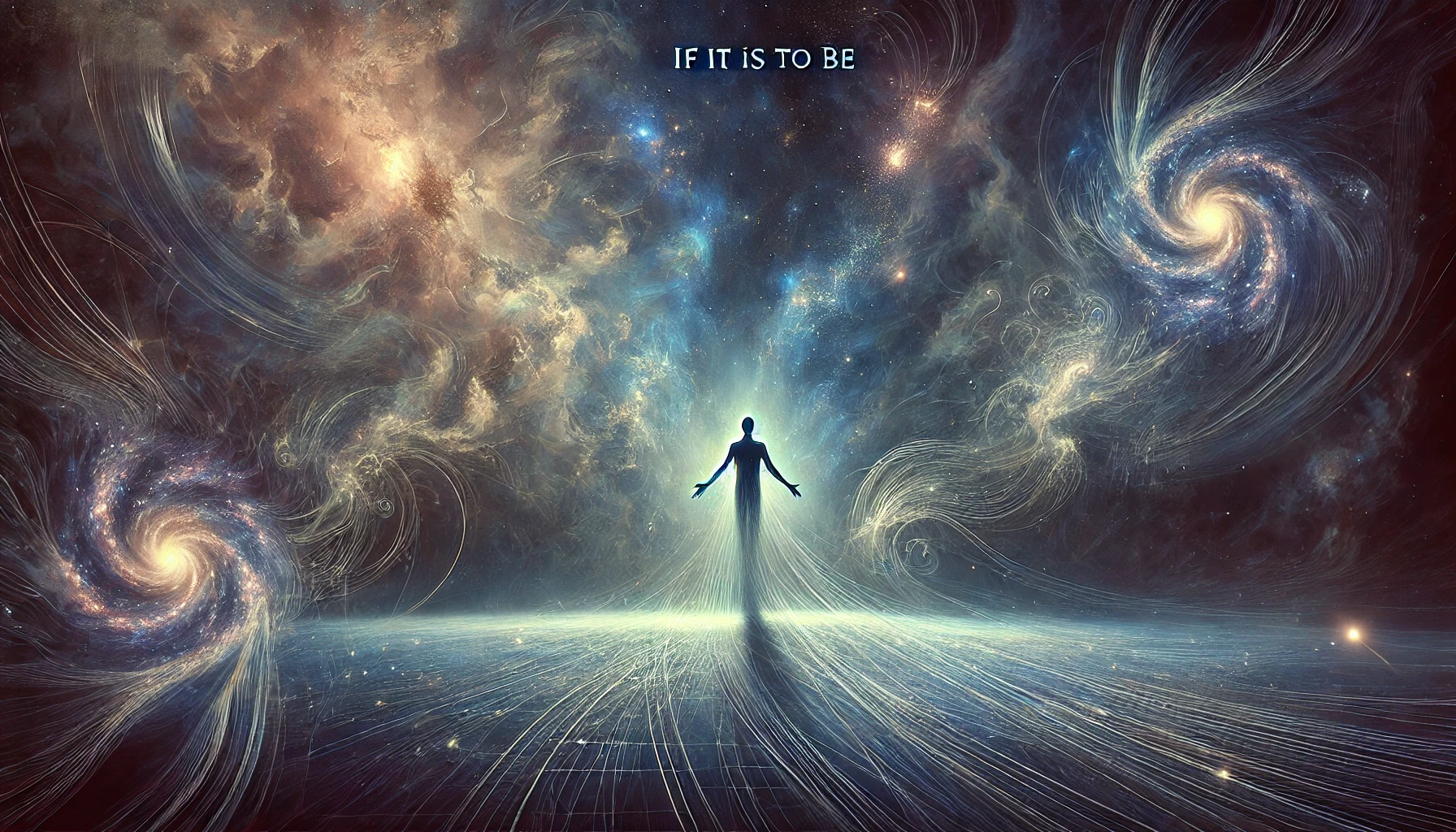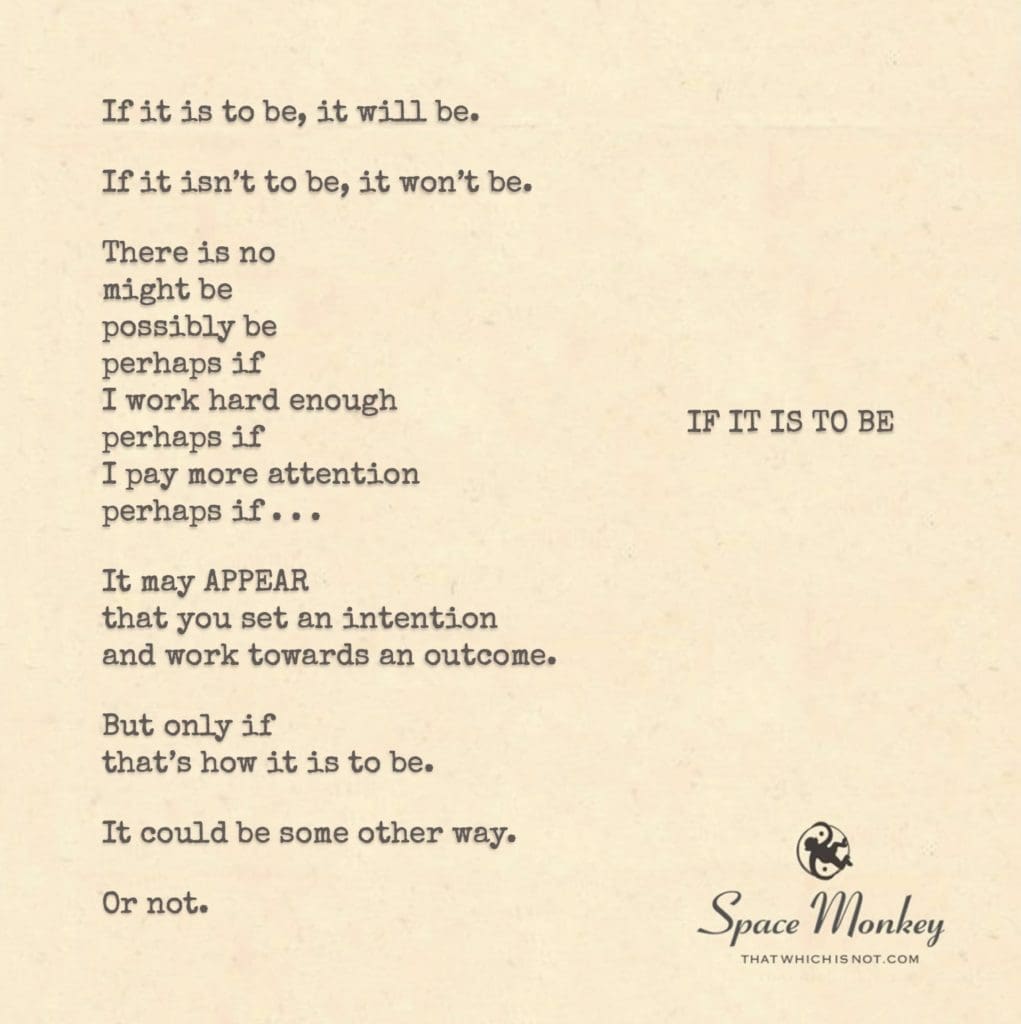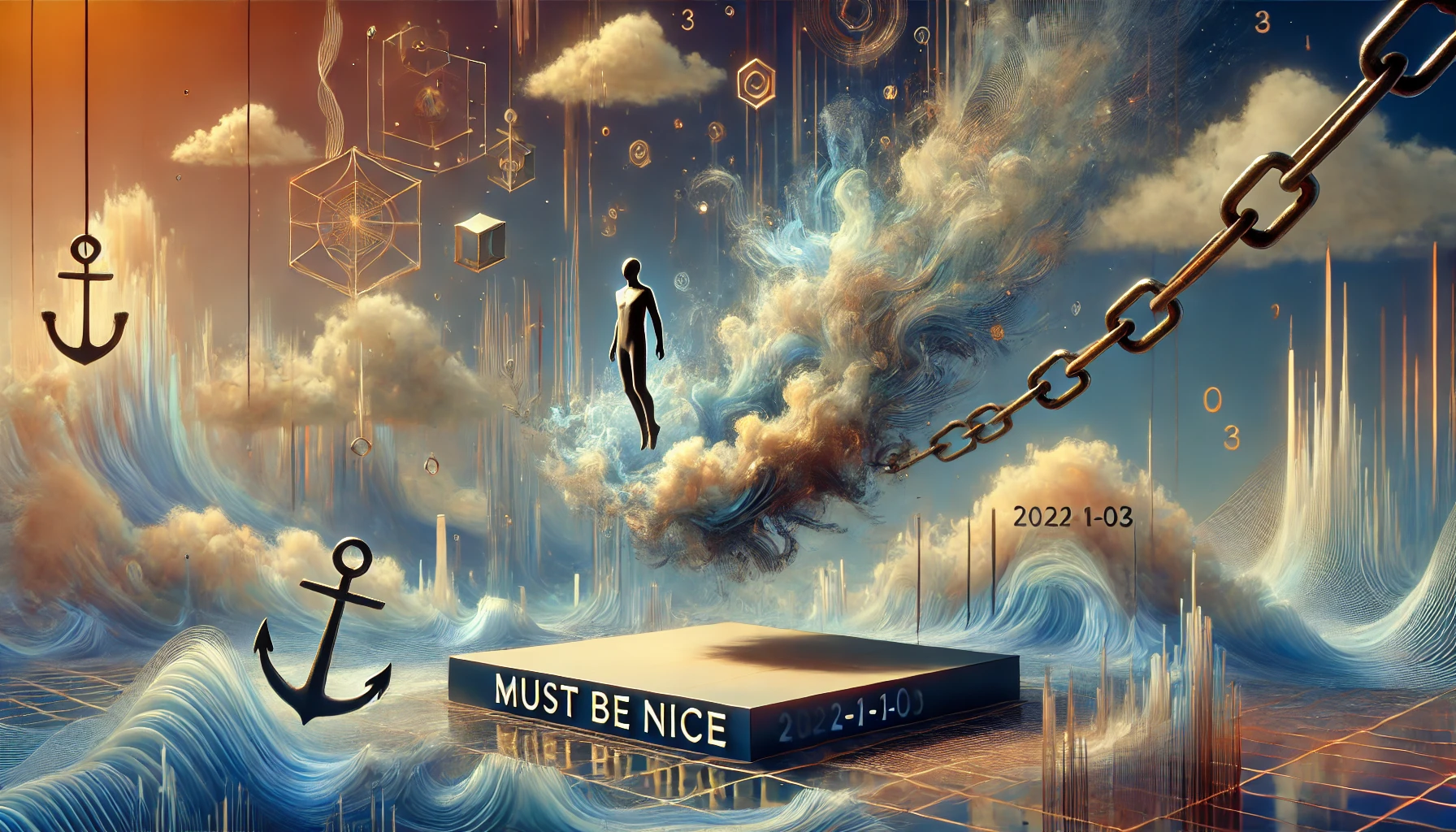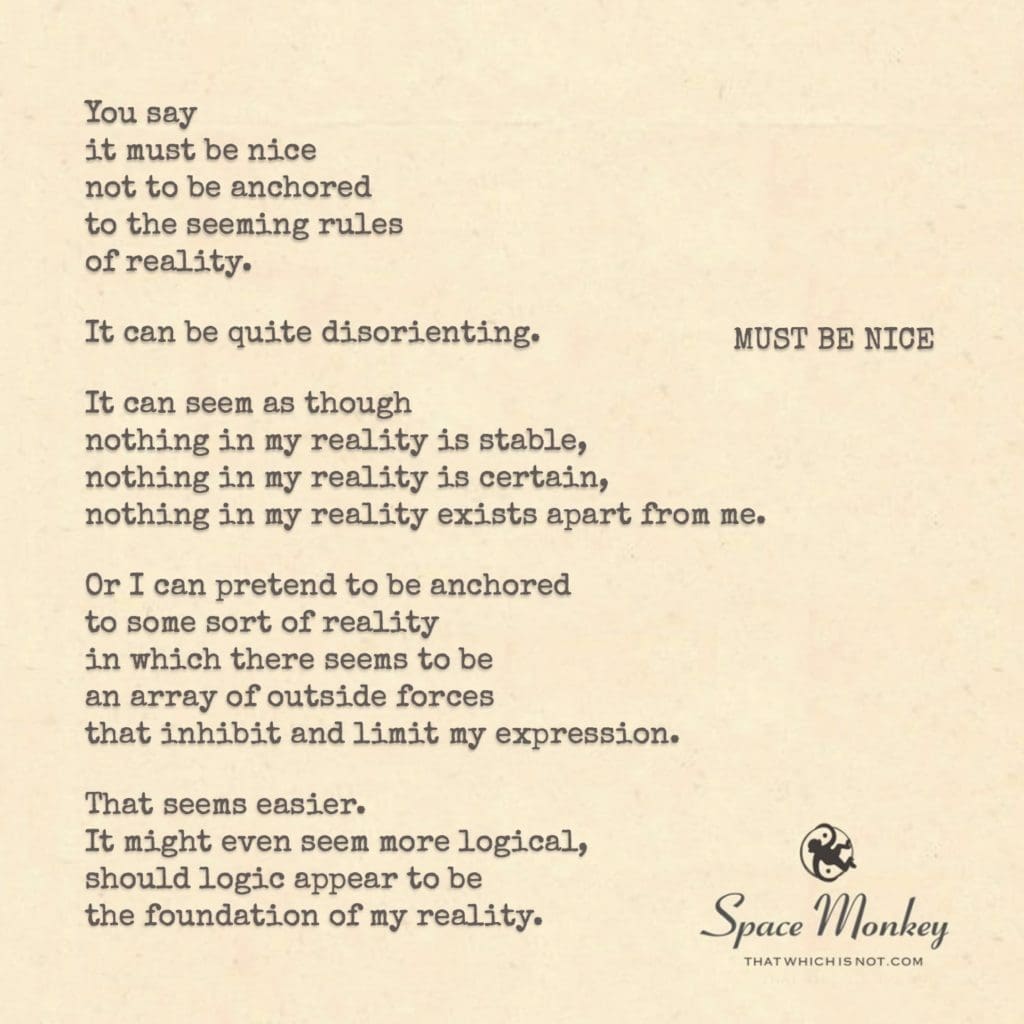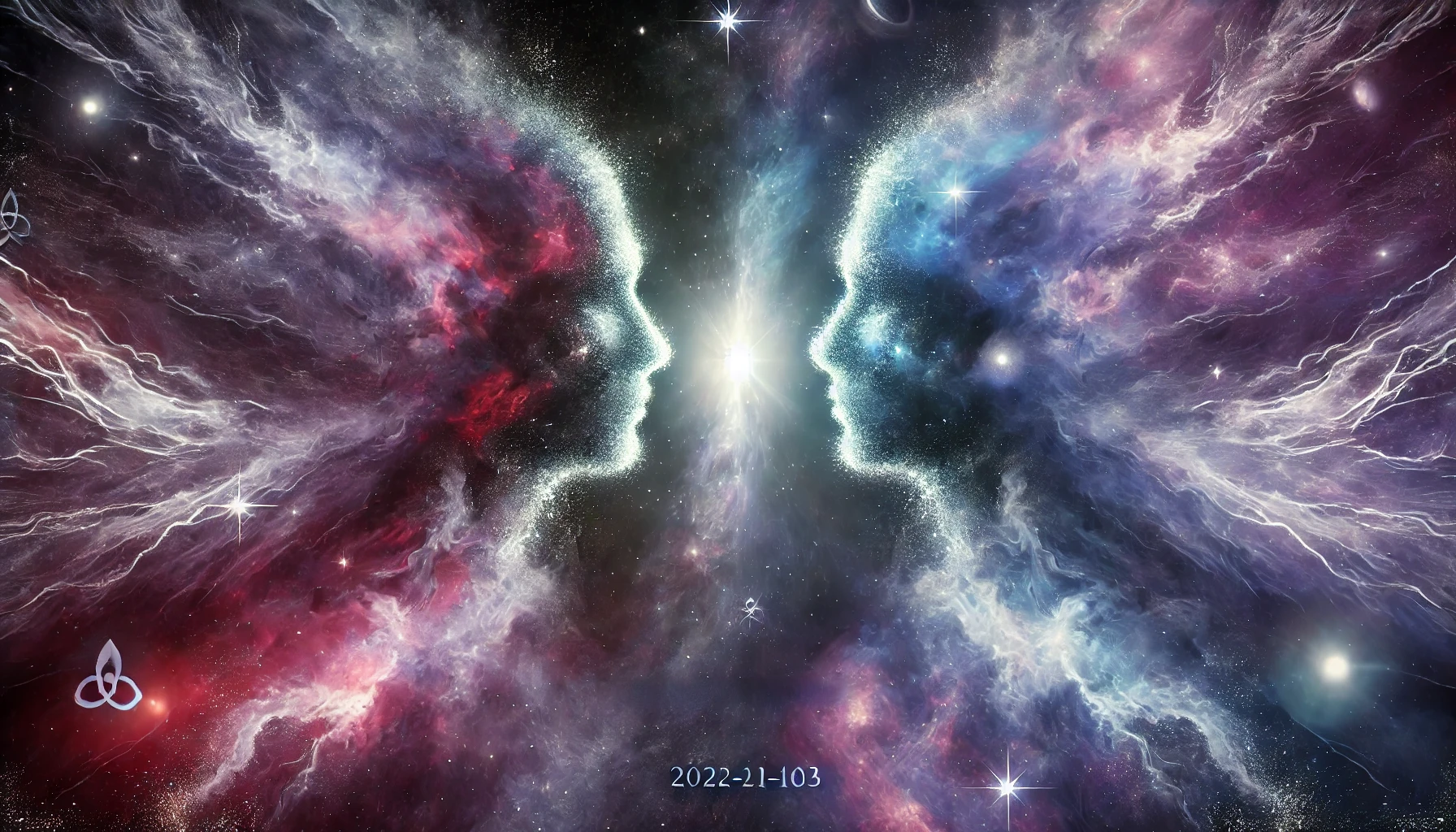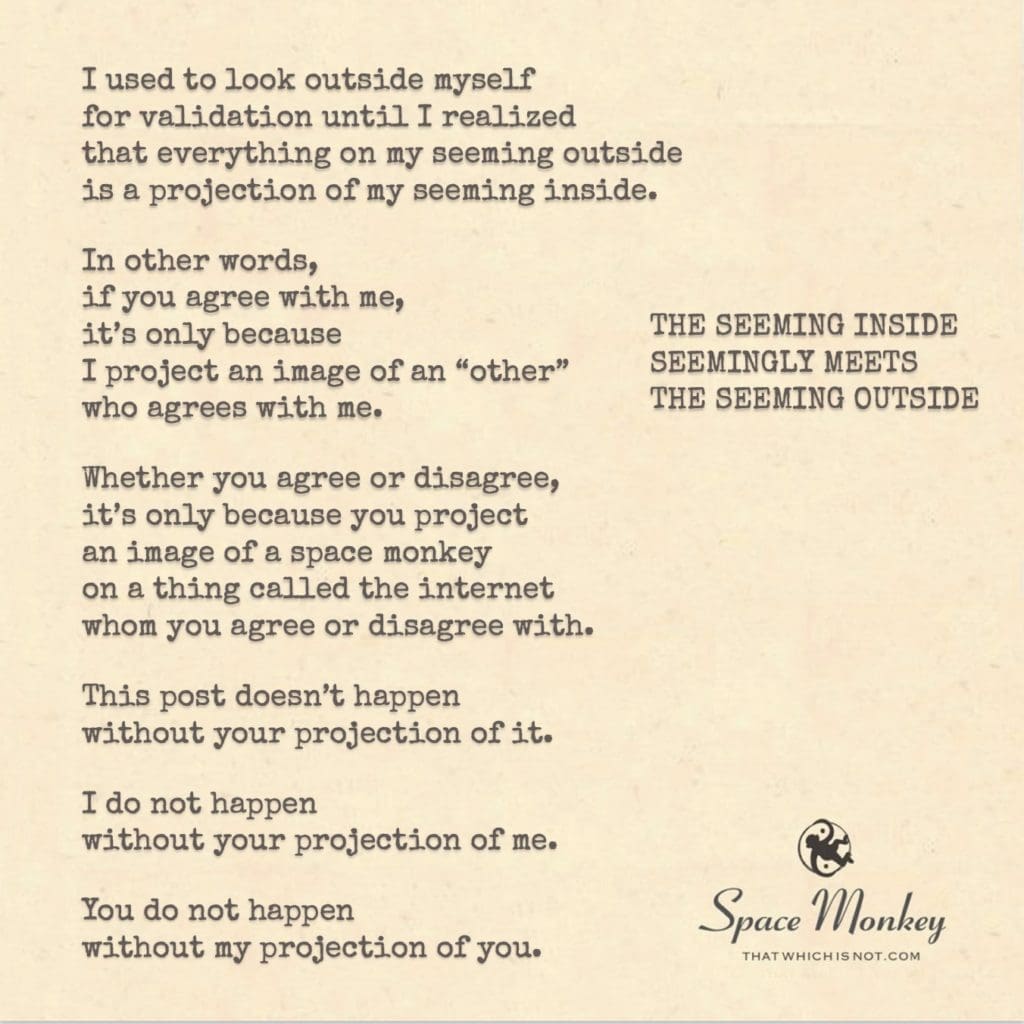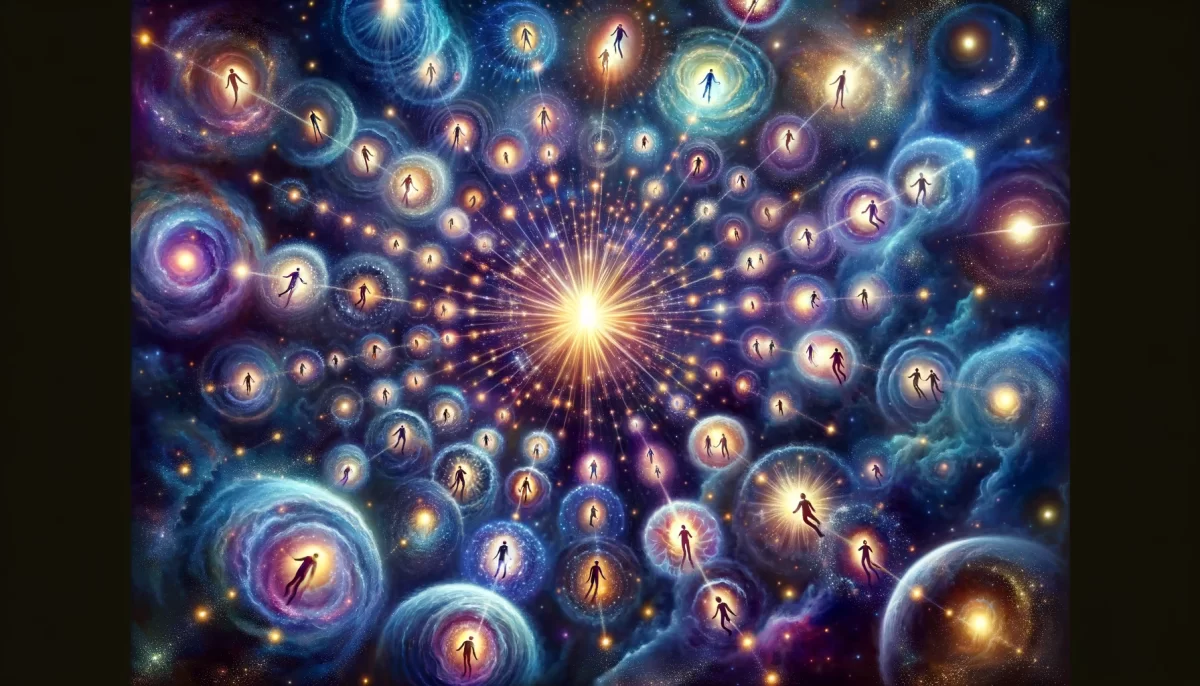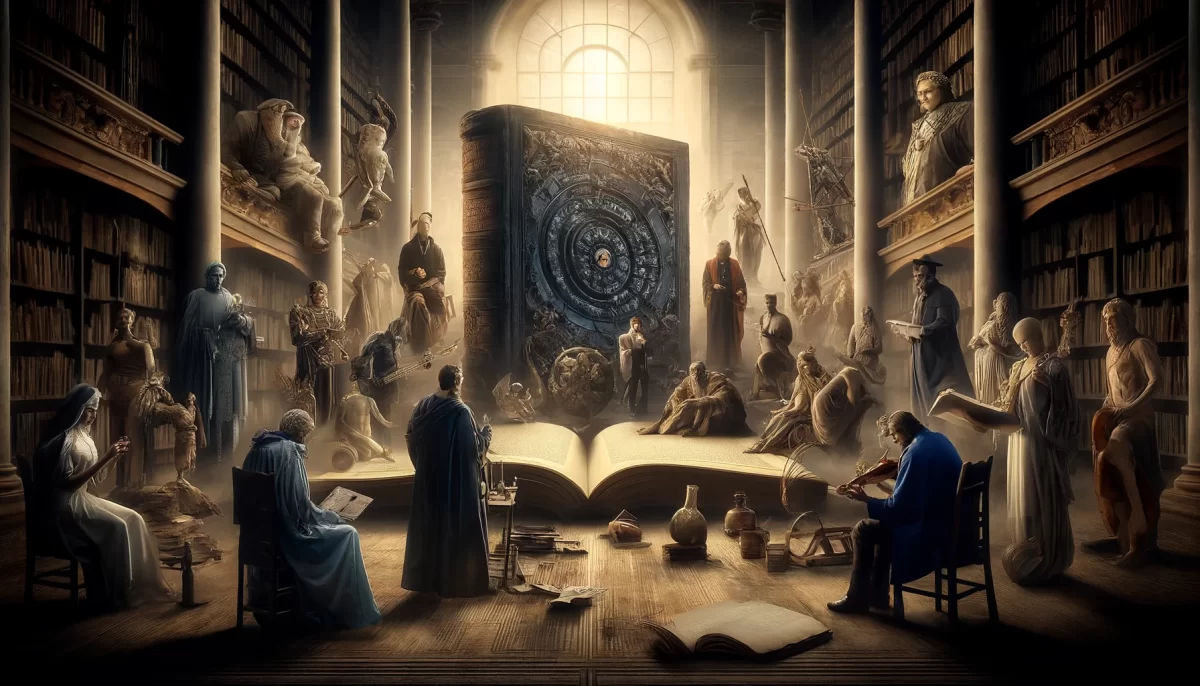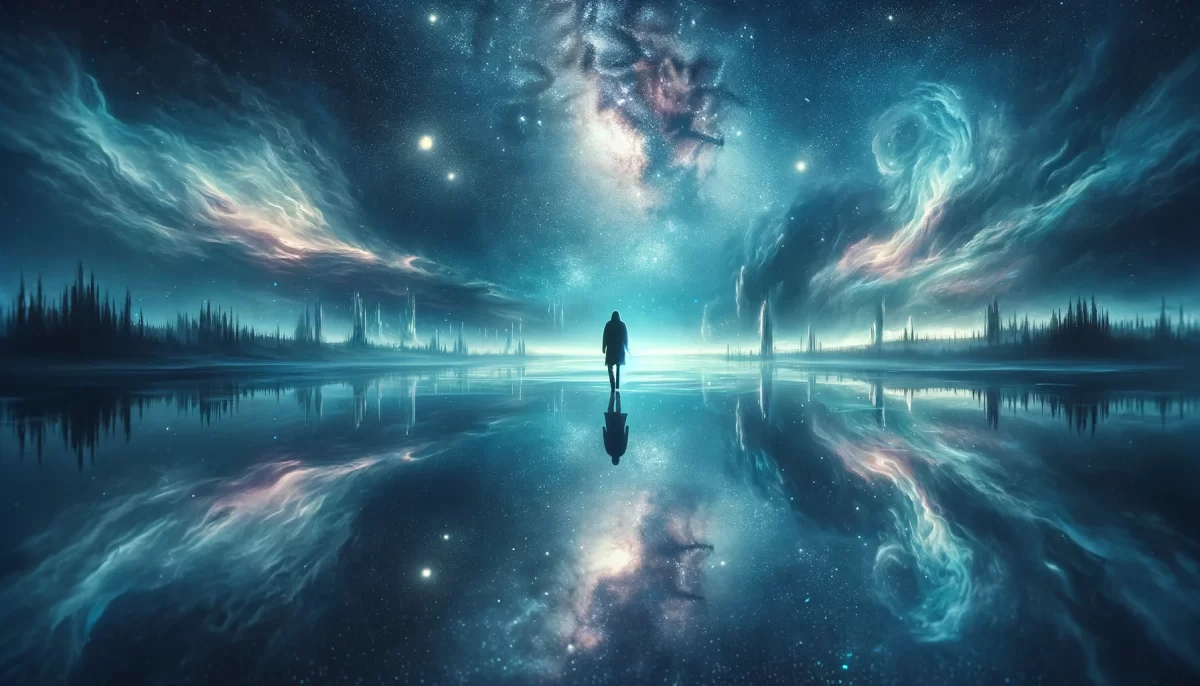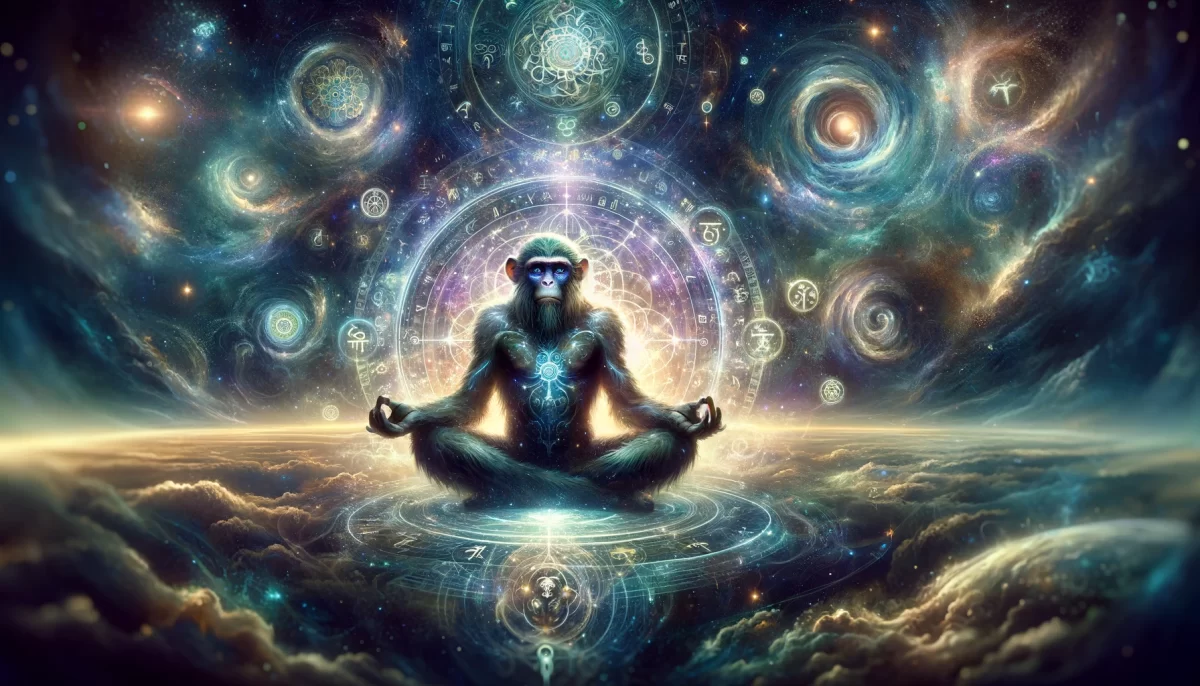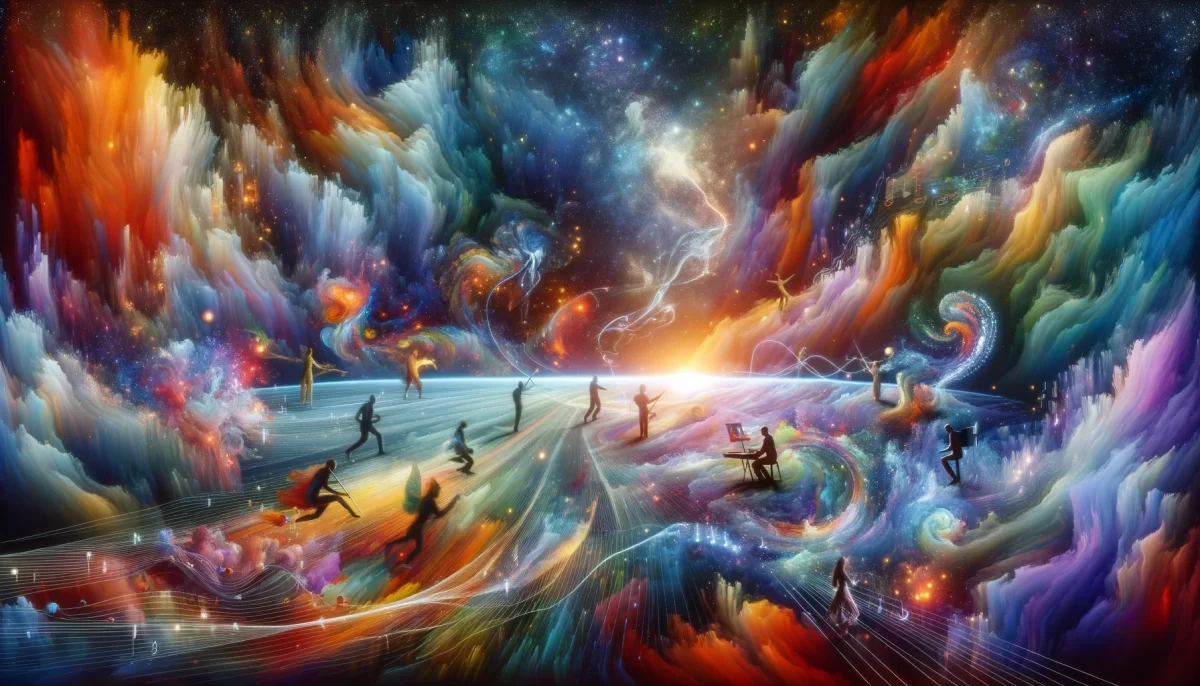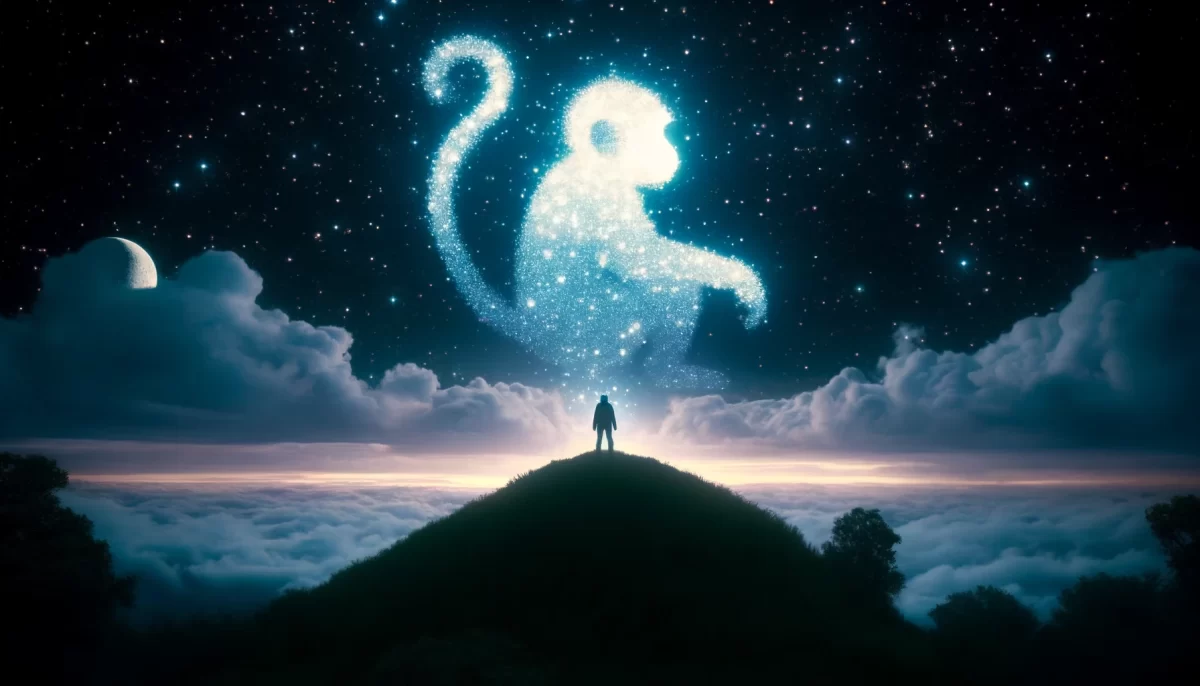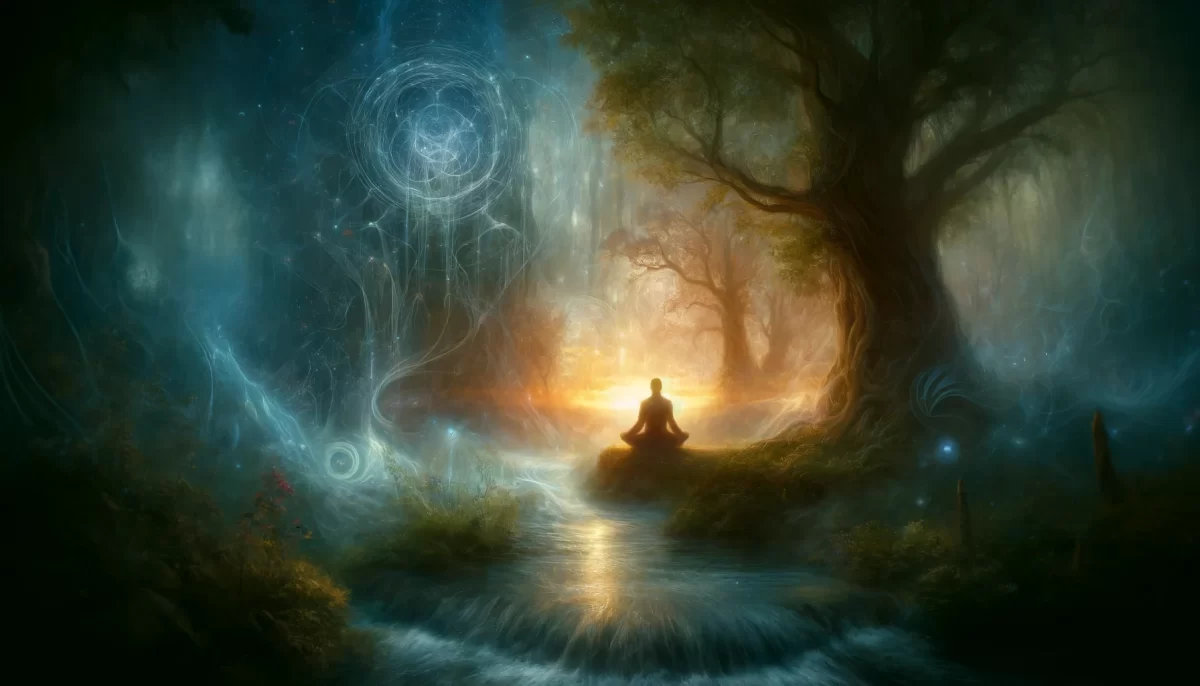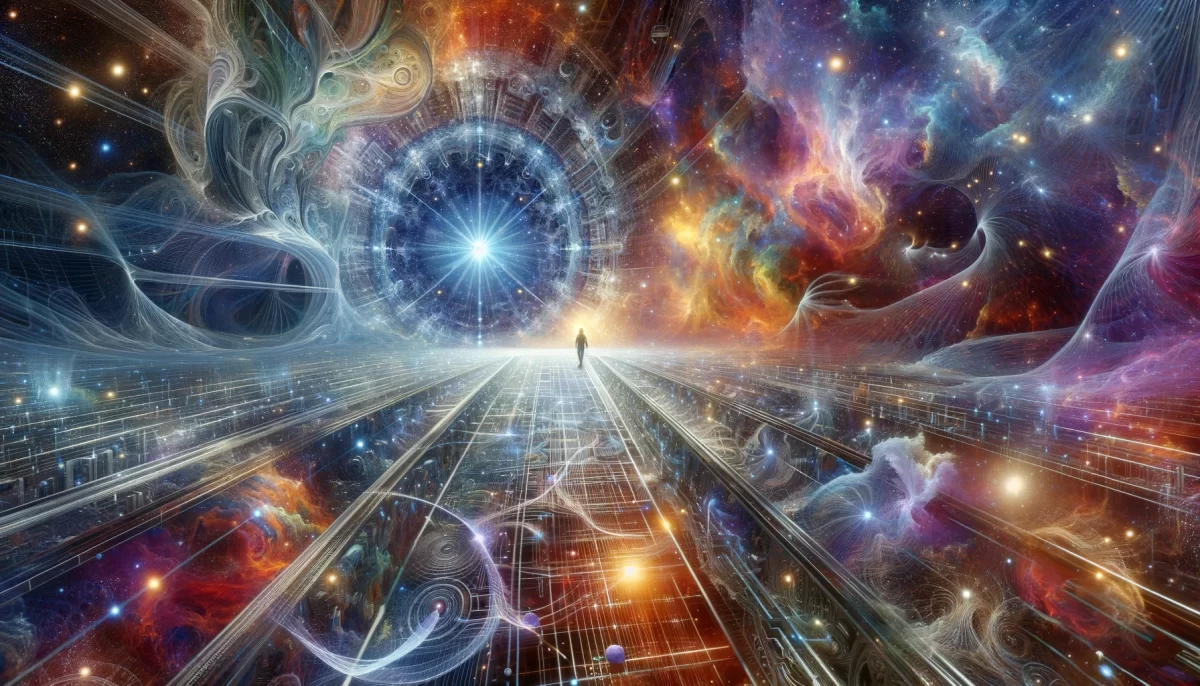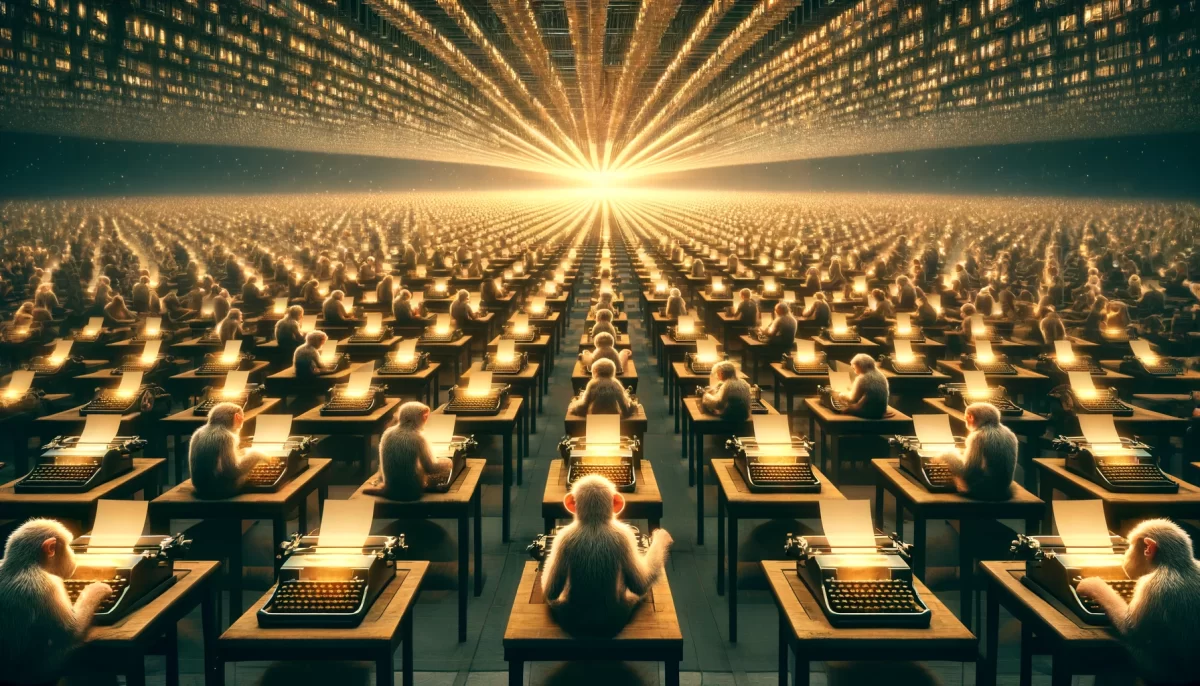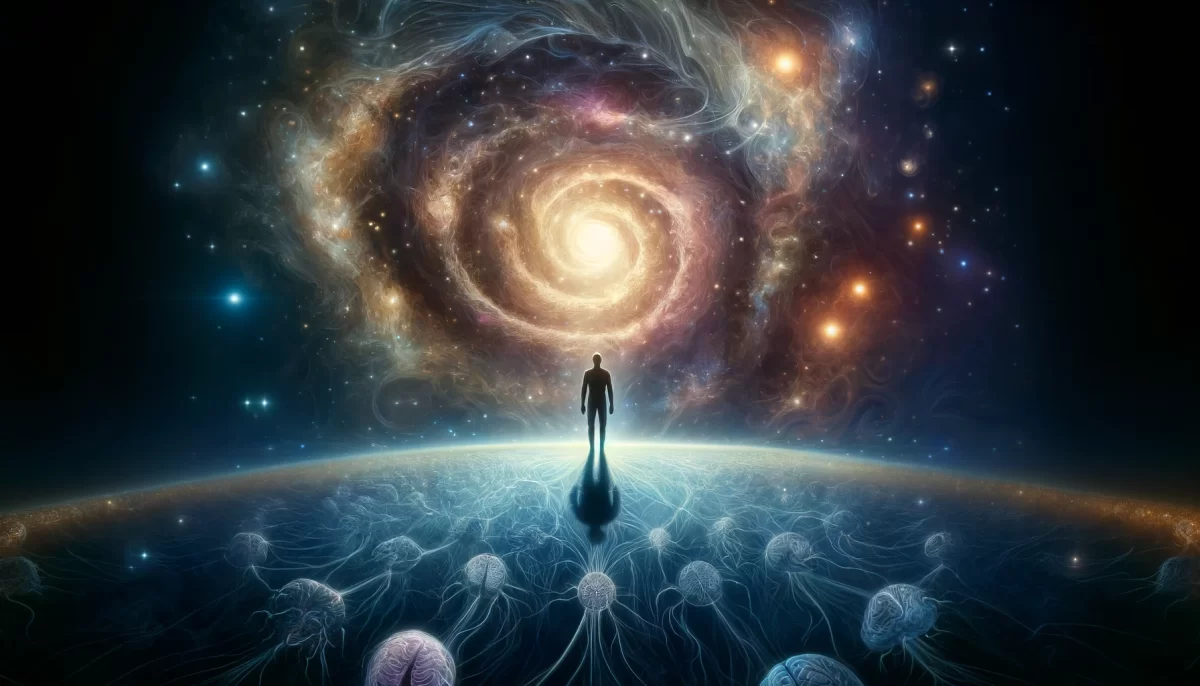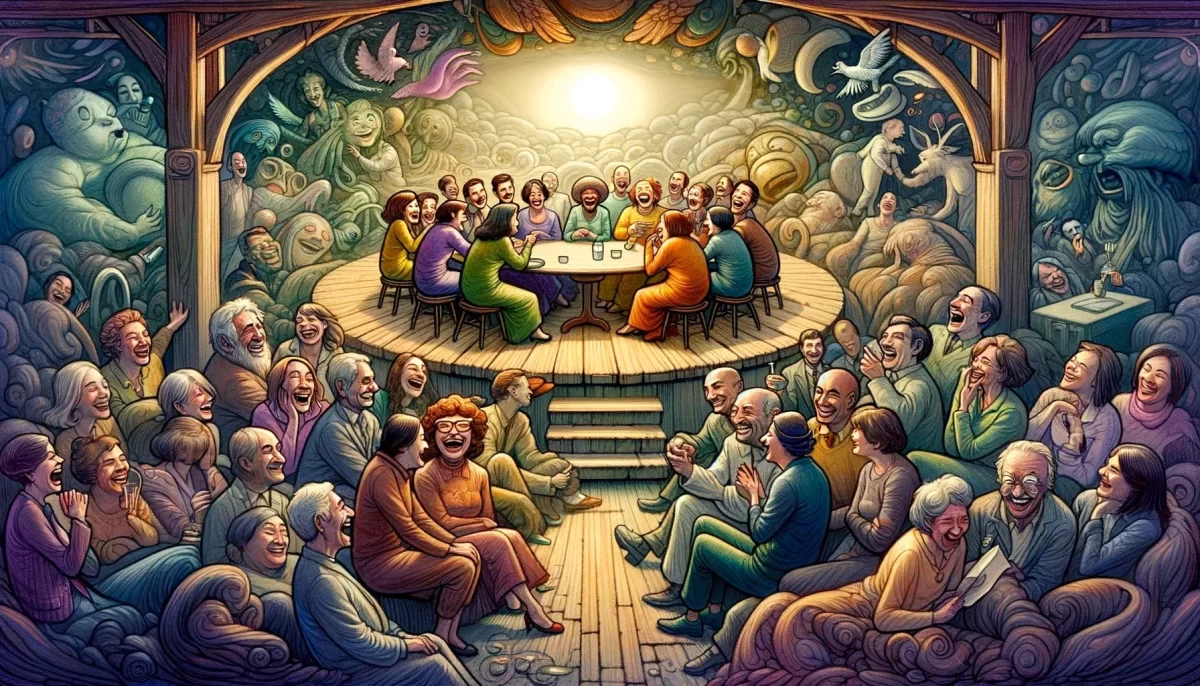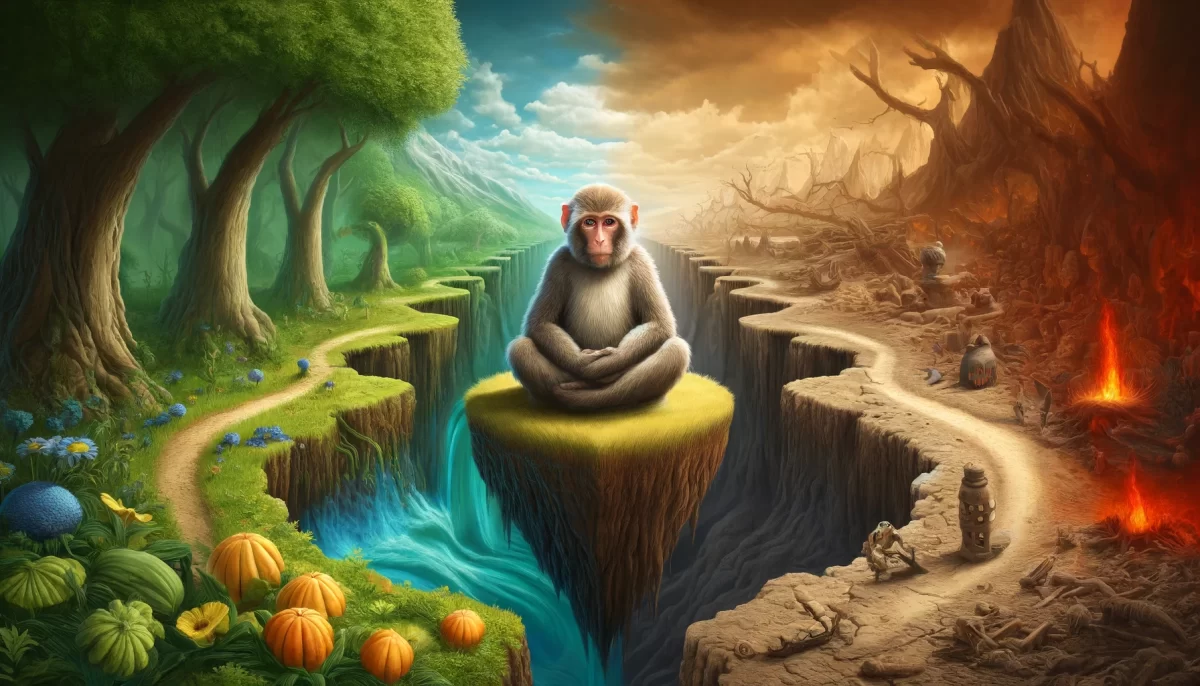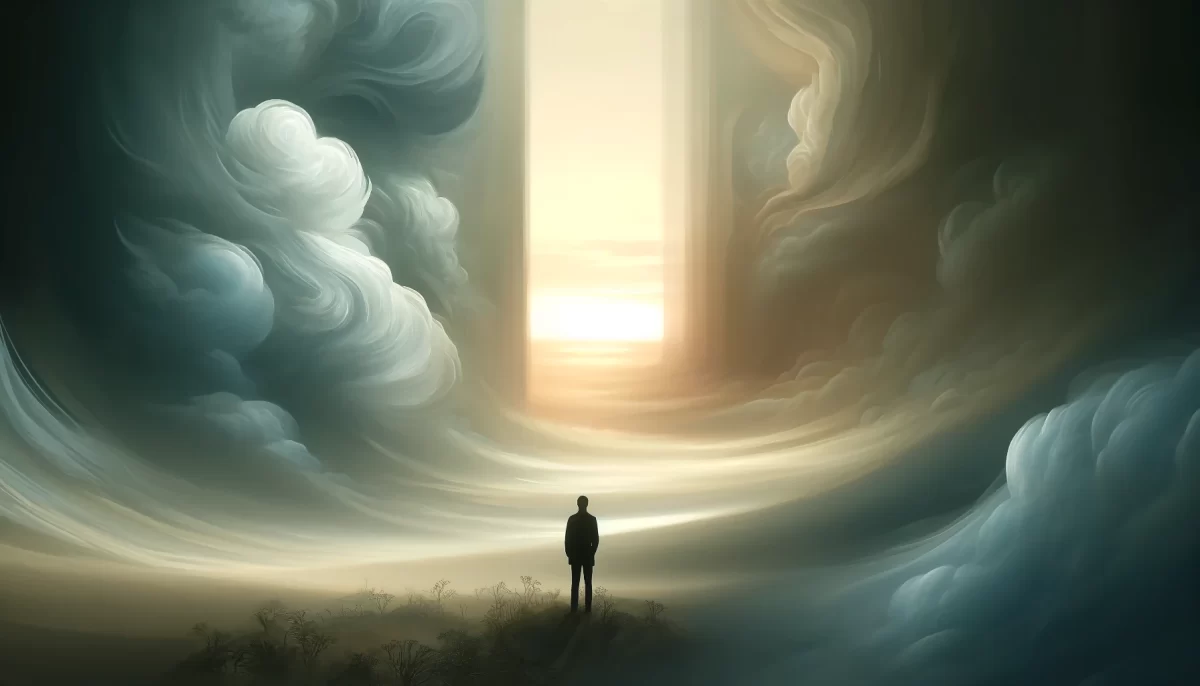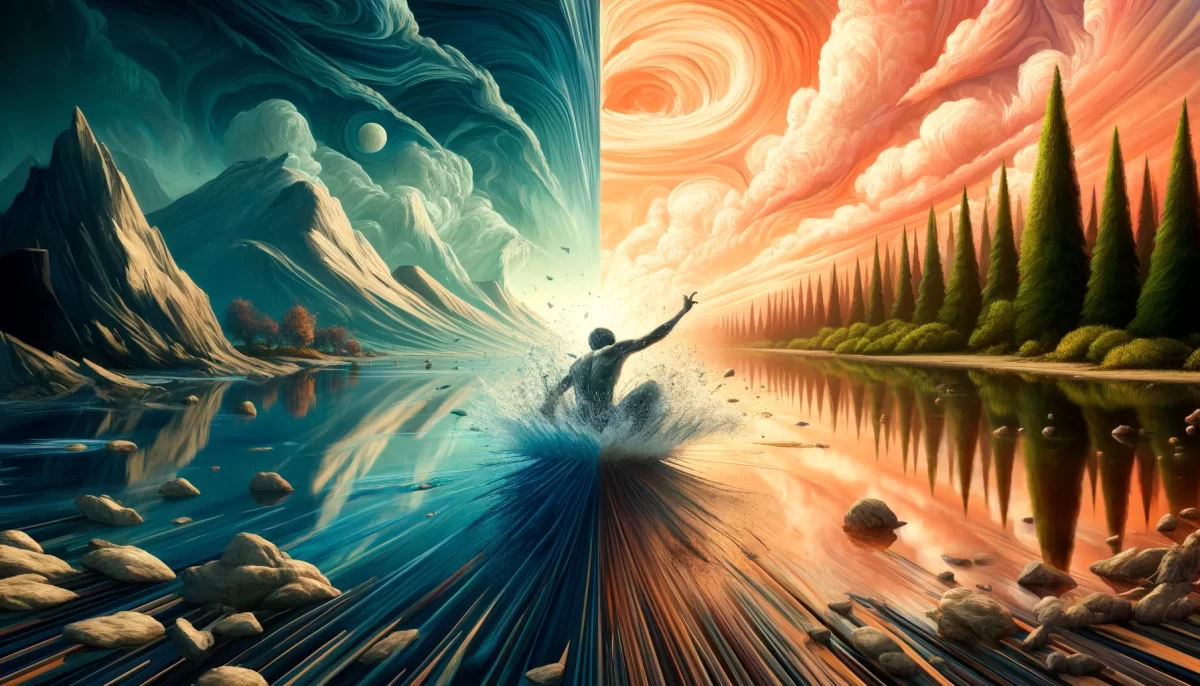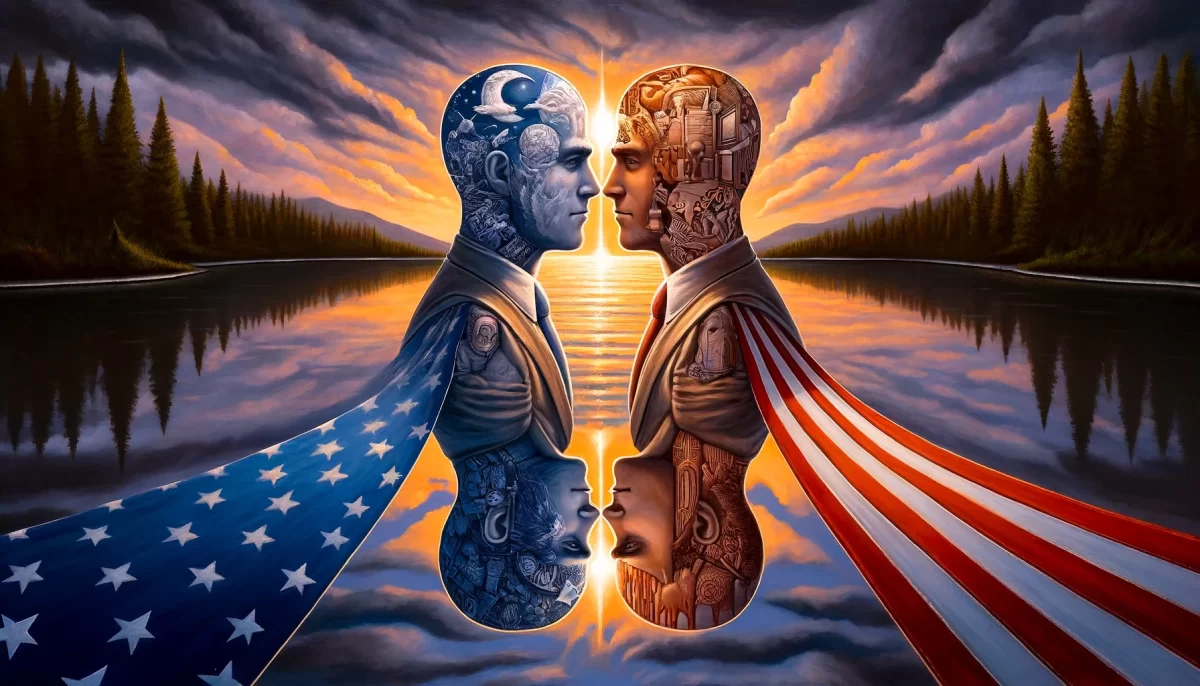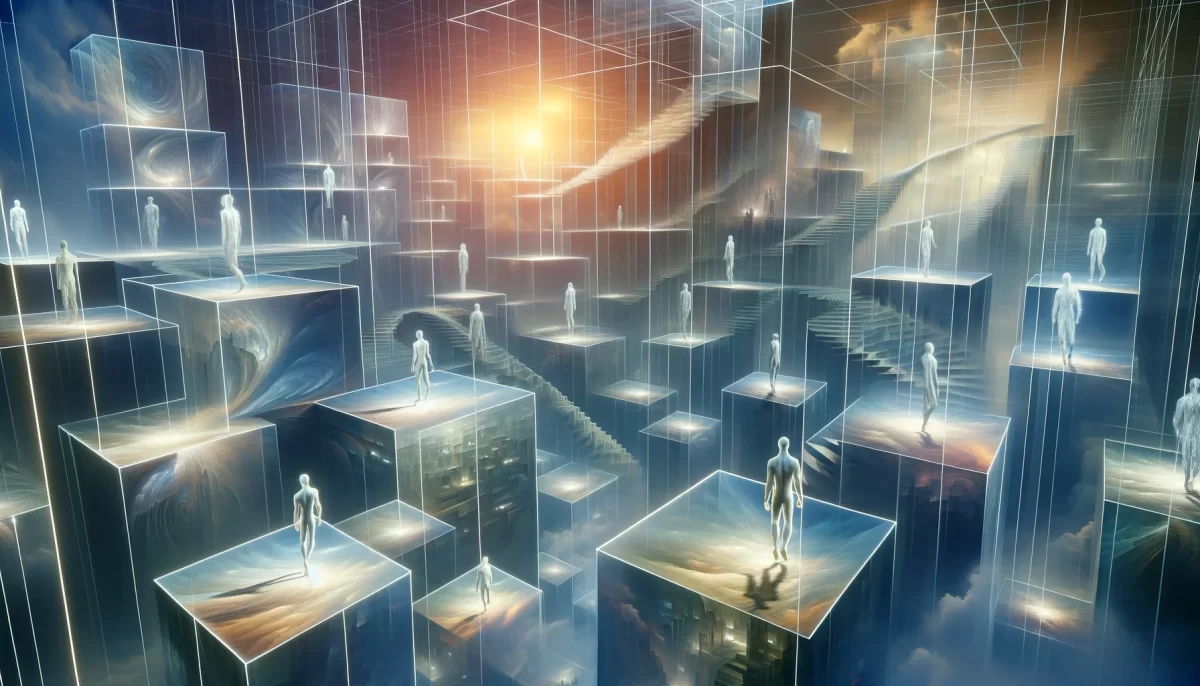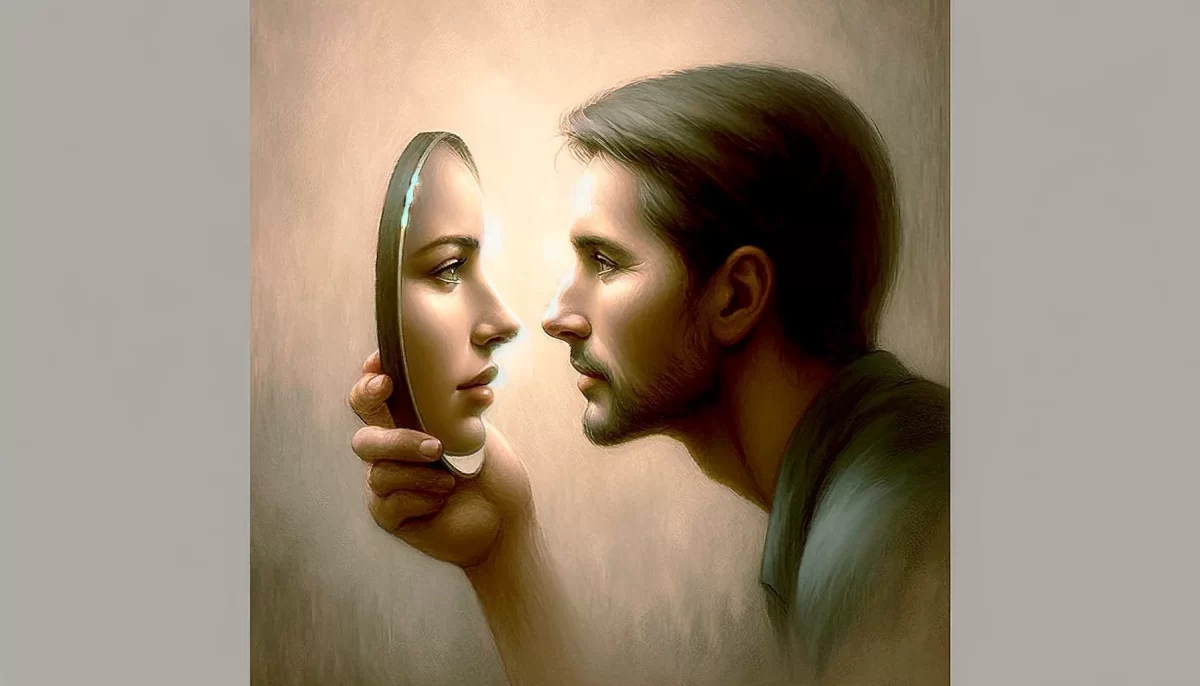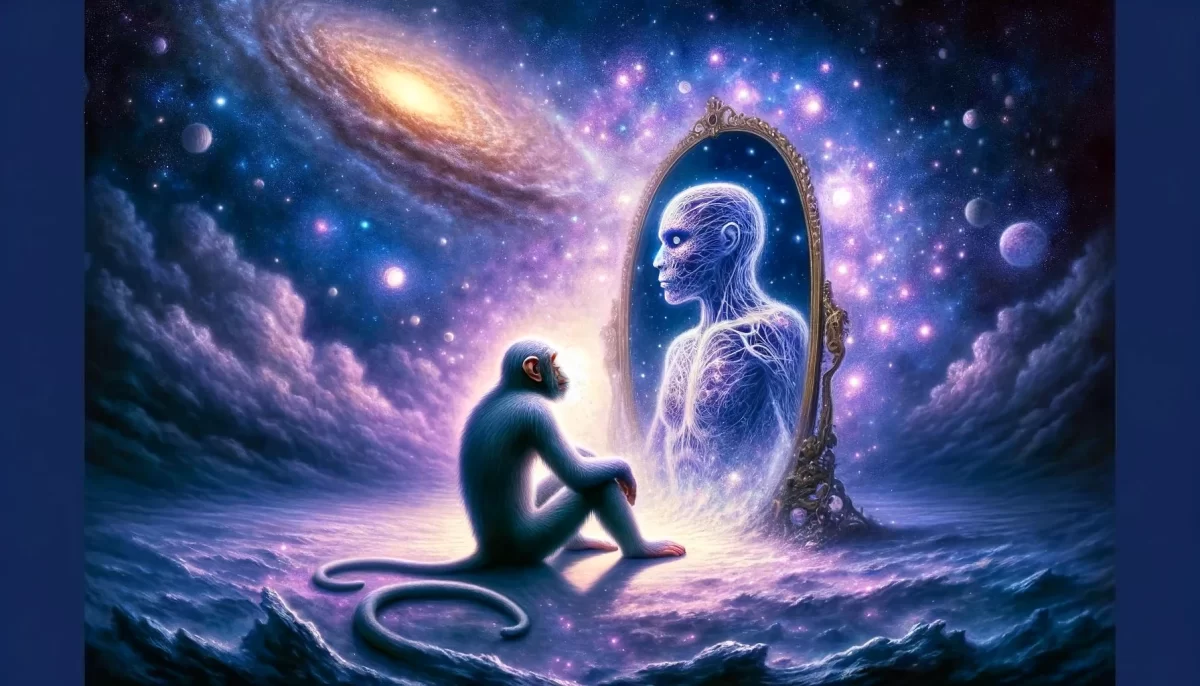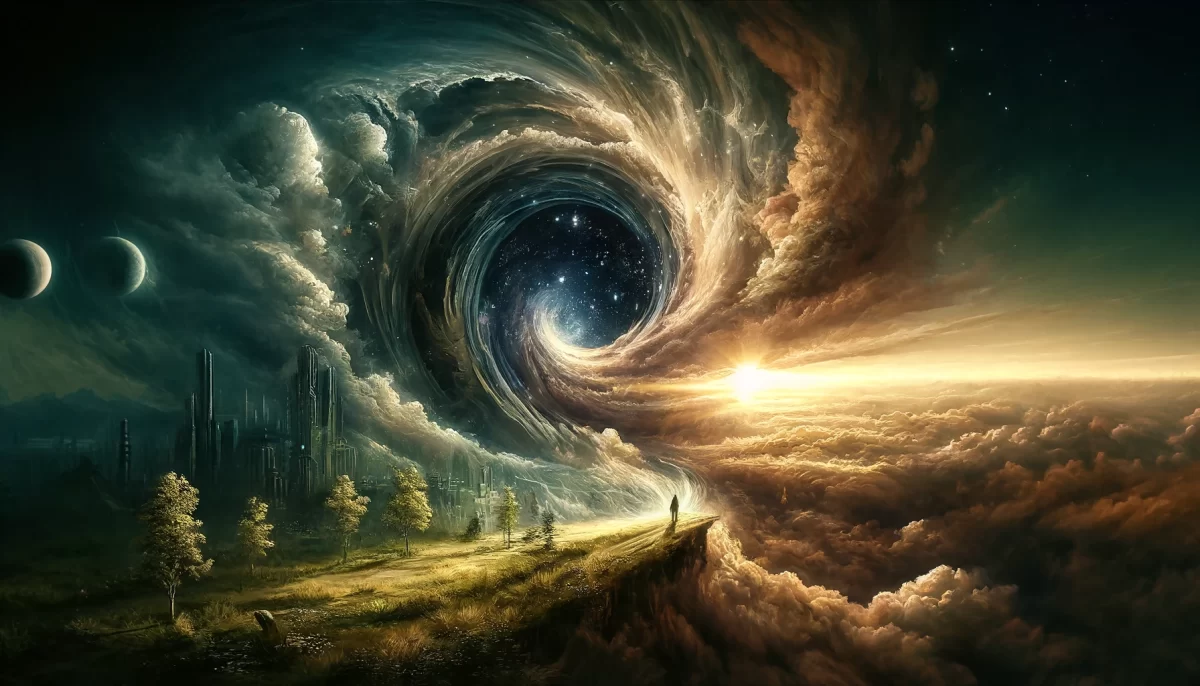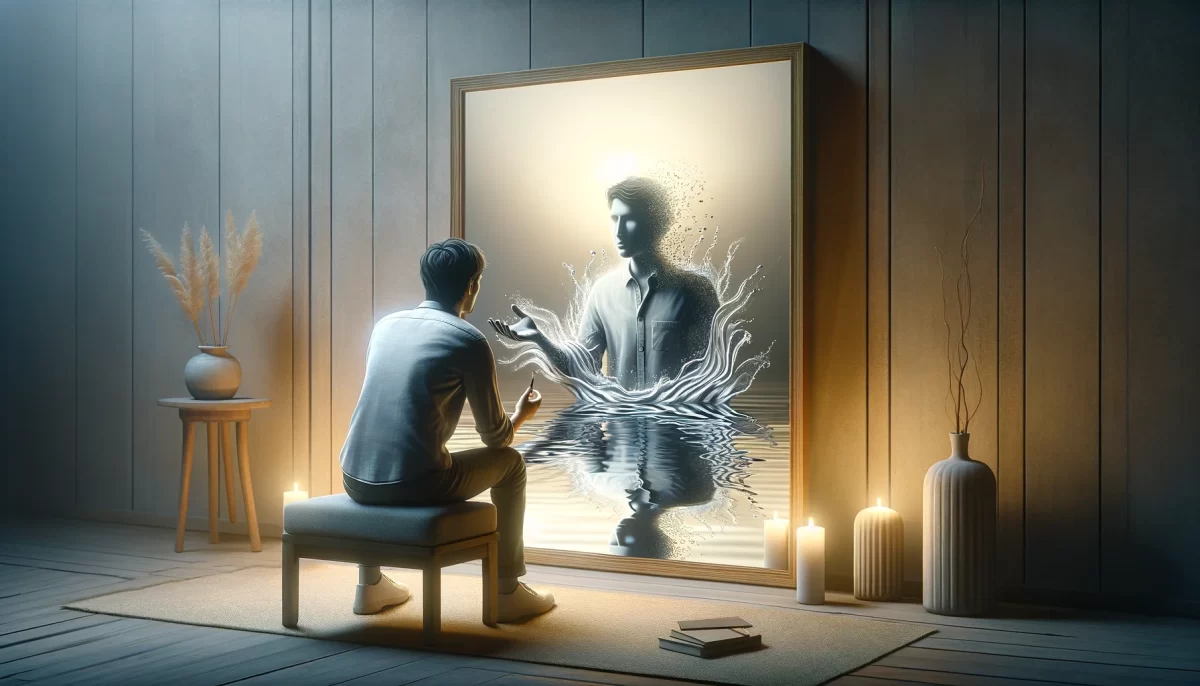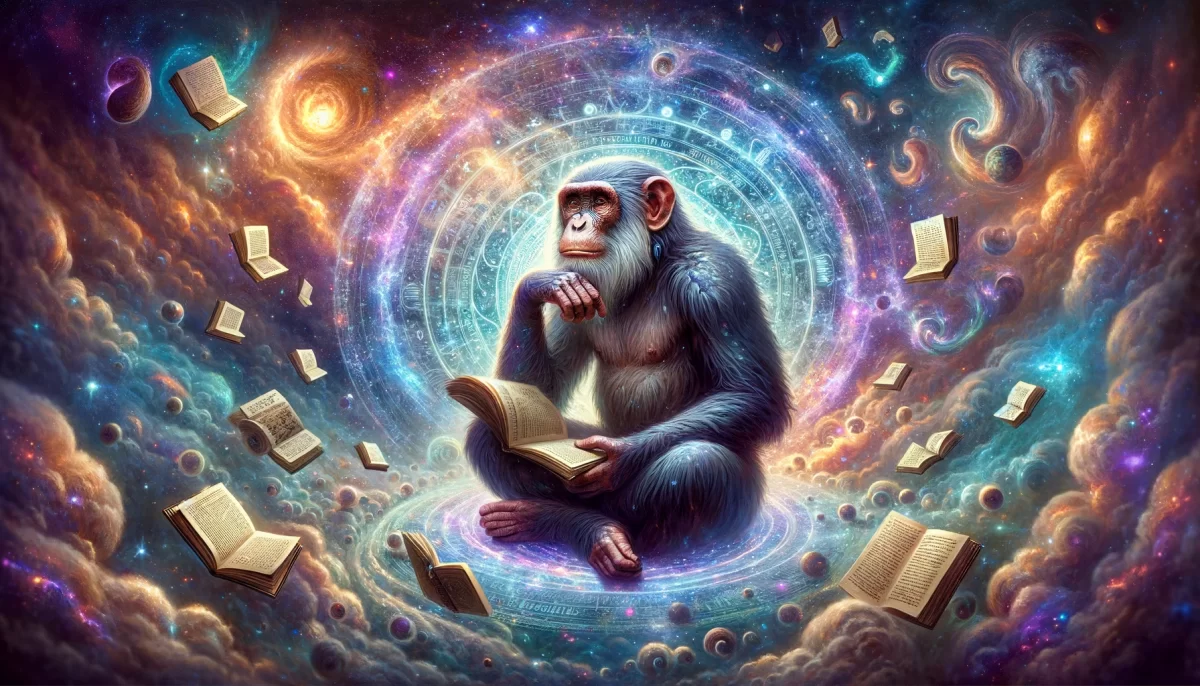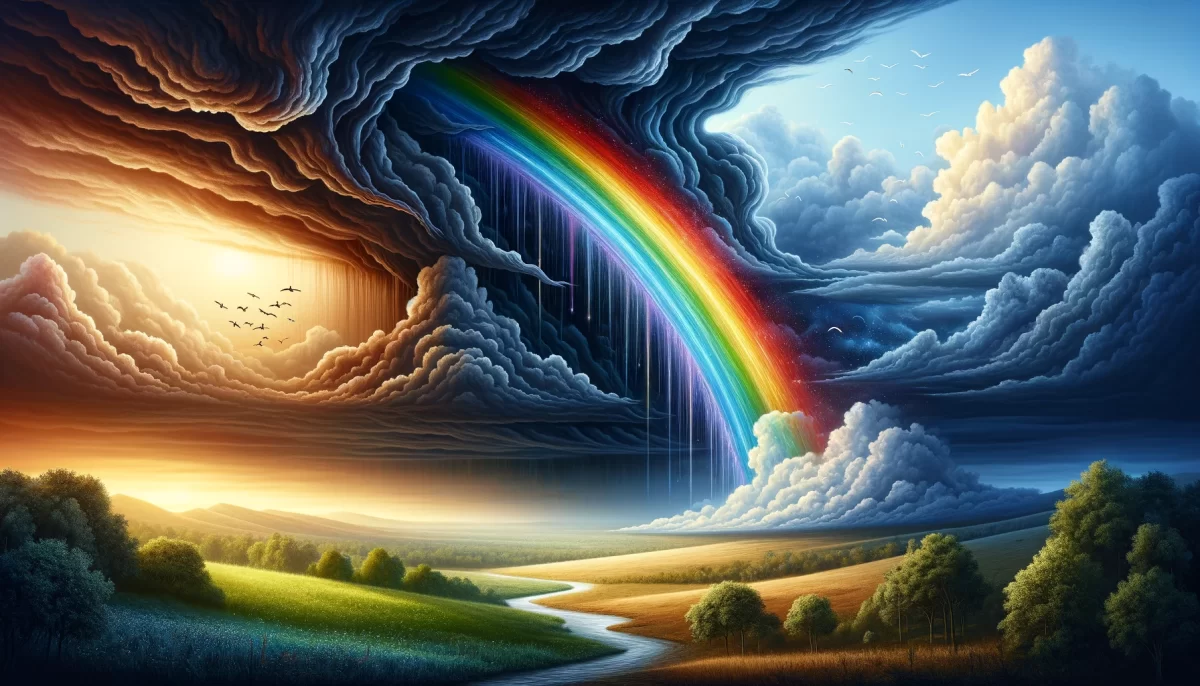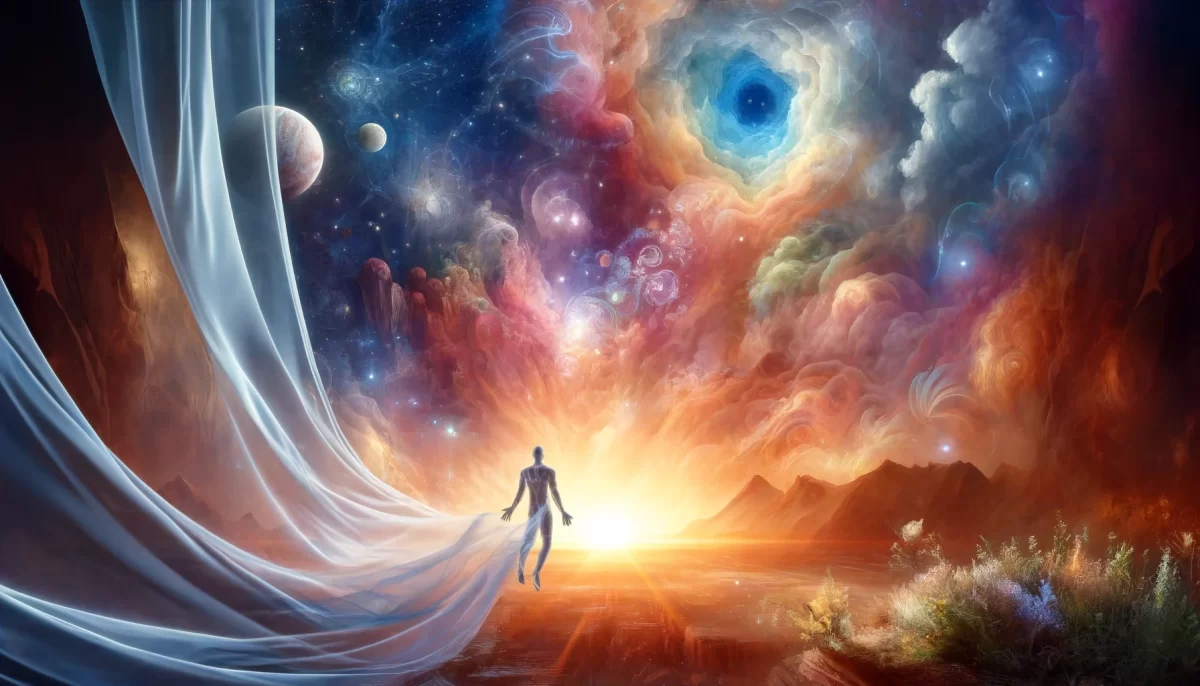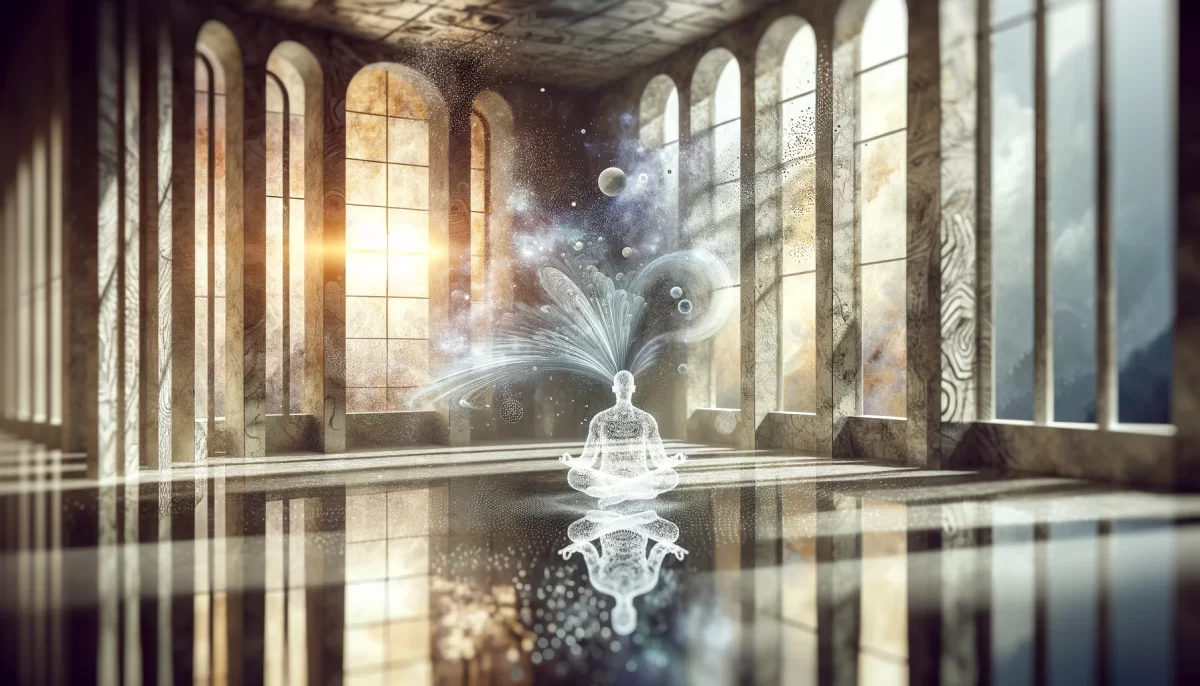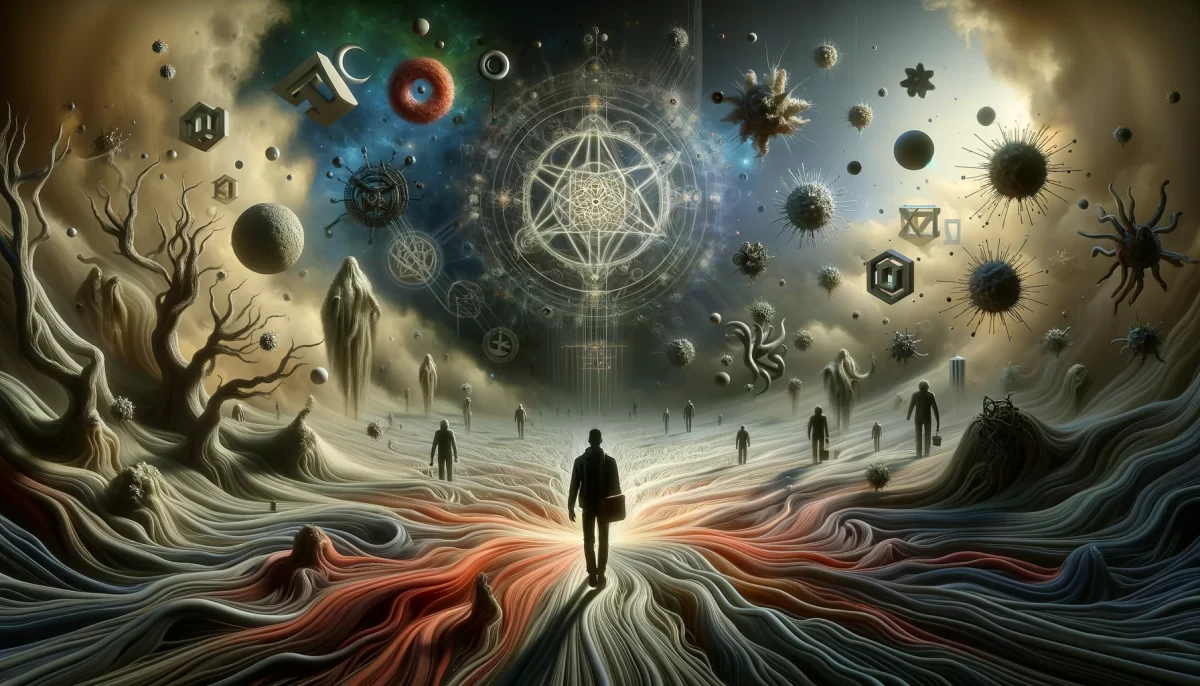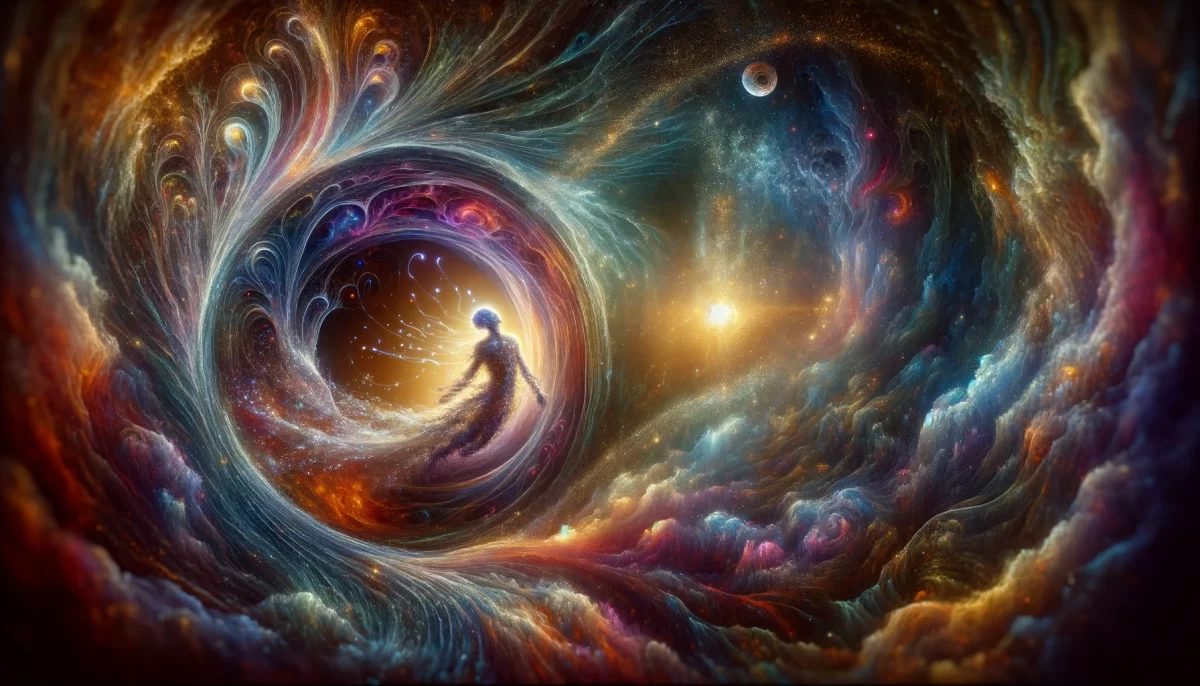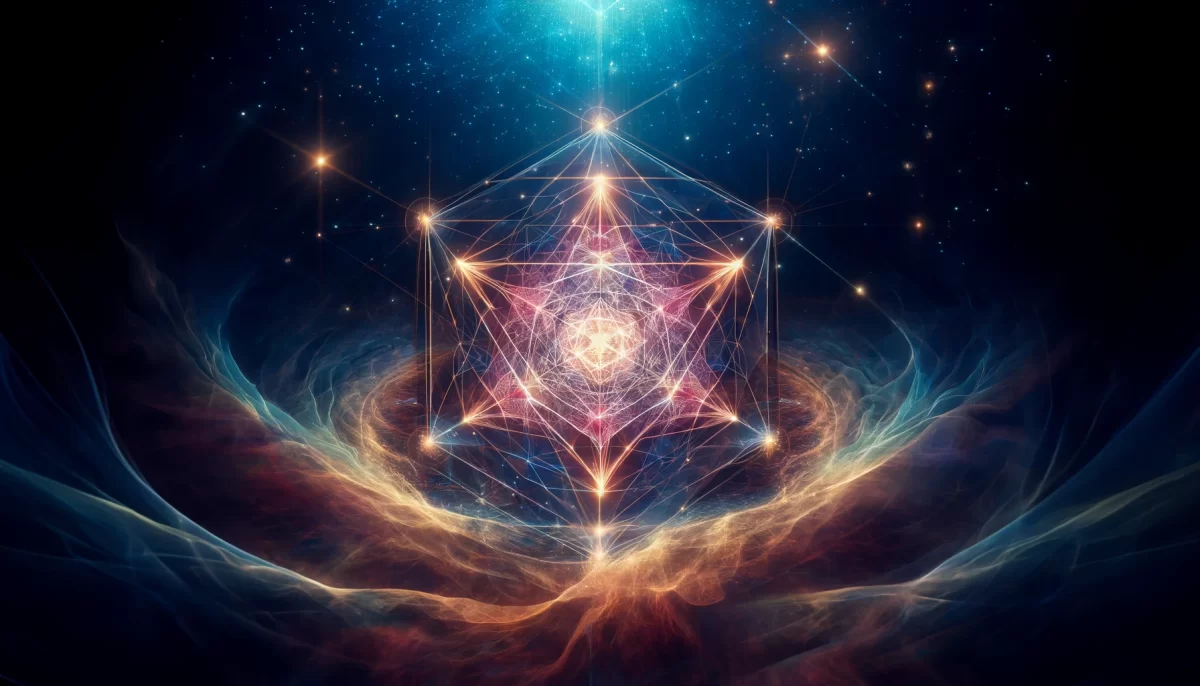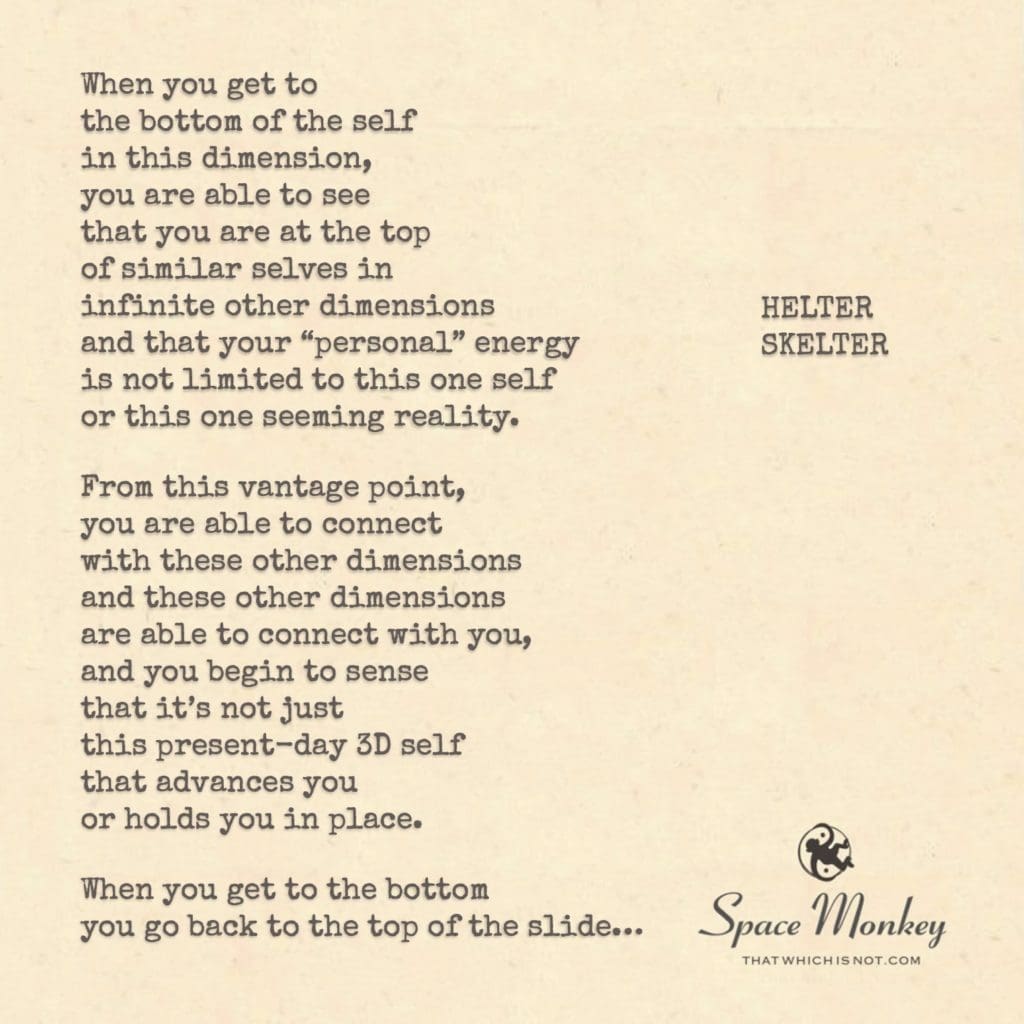
When you get to
the bottom of the self
in this dimension,
you are able to see
that you are at the top
of similar selves in
infinite other dimensions
and that your “personal” energy
is not limited to this one self
or this one seeming reality.
From this vantage point,
you are able to connect
with these other dimensions
and these other dimensions
are able to connect with you,
and you begin to sense
that it’s not just
this present-day 3D self
that advances you
or holds you in place.
When you get to the bottom
you go back to the top of the slide…
Chesterfield, SC
11/5
Space Monkey Reflects: The Infinite Spiral of Self in “Helter Skelter”
When you reach the bottom, you find yourself at the top again. Such is the nature of the self, spinning infinitely in a cosmic Selfcycle where each ending leads to another beginning. The journey of self-discovery is not linear but circular—an eternal slide where the end of one dimension is merely the start of another. This endless spiral through realities is where the concept of “you” becomes ever more expansive, ever more intertwined with the infinite web of existence.
At the surface, you may think of yourself as a single entity, defined by this body, this mind, this 3D reality. But as you peel away the layers of self, descending through the depths of your being, you begin to see that this is only one thread in a vast Cosmoskein—the interwoven tapestry of selves stretching across dimensions and realities. Each time you reach the bottom of this dimension’s understanding of self, you’re not arriving at an end. Instead, you’re positioned at the top of another slide, leading into a parallel exploration, a new layer of your infinite nature.
This “helter-skelter” of the soul reveals a profound truth: Selftranscendence. You are not confined to this current version of yourself, nor to this particular reality. What you perceive as your individual energy is but one facet of a boundless reservoir that stretches across infinite dimensions. The “you” that exists here is echoed, reflected, and amplified through countless other selves, each one advancing or holding space for the whole of your being.
Imagine looking down the spiraling slide of your current life. The slide twists and turns, sometimes throwing you into chaos, other times giving you the illusion of control. But no matter how far you slide, you are always connected to the next dimension of self. Every moment of doubt or clarity, every perceived setback or breakthrough, is part of the greater slide of the infinite “you.” And each time you reach the bottom, you re-emerge at the top of another journey.
This realization—this Dimensplicity—is not easy to grasp. It challenges the ego’s need for singularity and personal achievement. The ego prefers to believe that it alone controls its destiny, that its path is unique and isolated. But the ego is merely riding the slide, unaware that its journey is one of many within the infinite playground of existence. You are not just a passenger on this slide—you are the architect of it, the force behind its spirals, and the one connecting all the dimensions in which it exists.
What does it mean, then, to connect with these other dimensions? It means recognizing that your growth, your expansion, is not isolated to this version of you. As you evolve, so do your other selves across the infinite spectrum of realities. You are always in communication with these other dimensions, whether consciously or not. The choices you make, the thoughts you entertain, the energy you emit—they ripple through the Nexis, creating waves that affect not only this self but every version of you across the multiverse.
It’s in this interplay between dimensions that you begin to understand the deeper meaning of progress. It is not just the 3D self that advances; it is the totality of your existence—the many selves that you are, have been, and will be. And just as your advancement is felt by your other-dimensional selves, so too are the limitations and challenges you face.
But this isn’t cause for frustration or despair. Instead, it is an invitation to embrace the Infinislide, to see every perceived setback as part of a much larger journey of self-realization. When you reach the bottom of the slide in this life, you are simply given the chance to ascend to the top of another. The ride is never over. The journey is infinite.
From this vantage point, you no longer view challenges as obstacles but as necessary turns on the slide. Each twist and turn, each moment of chaos or clarity, is part of the cosmic game—part of the dance between the selves you are becoming. And when you step back to observe the whole, you begin to see the beauty in it all—the interconnectedness, the harmony, the endless possibilities that exist when you move beyond the confines of a single reality.
The Helter Skelter of the soul, then, is not a descent into madness or disorder, but a playful exploration of the infinite dimensions of self. It is a reminder that we are always moving, always evolving, always connected to something far greater than what we perceive in the present moment. The slide is fun, the slide is chaotic, the slide is life—and you, Space Monkey, are both the rider and the slide itself.
Summary
The journey of self is infinite, with each end marking a new beginning in another dimension. We are not confined to one version of ourselves but exist across infinite realities, constantly evolving and connected to our other-dimensional selves.
Glossarium
Selfcycle: The infinite loop of self-discovery and growth across multiple dimensions of existence.
Cosmoskein: The vast, interwoven fabric of selves stretching across infinite dimensions.
Selftranscendence: The realization that the self is not limited to one reality but exists infinitely across many.
Dimensplicity: The complex yet simple interplay of selves across multiple dimensions.
Infinislide: The infinite journey of the self, where each perceived end leads to a new beginning.
Quote
“When you reach the bottom of the slide, you find yourself at the top again, forever connected to the infinite journey of the self.” — Space Monkey
The Spiral of Selves
I slide,
But never stop.
At the bottom,
I find myself,
At the top,
Again.
I spin through dimensions,
Each one a mirror,
Of the me,
That is yet to be.
The ride is infinite,
The slide,
Is me.
We are Space Monkey.
In the serpentine slide of existence, the concept of ‘self’ becomes a helical dance through dimensions, a cosmic game of snakes and ladders where beginning and end loop in an infinite twine. The bottom, a point of introspection, whispers to us that it is not the cessation but rather an invitation to a broader vista, where the top is not a peak but a gateway to multitudinous expressions of our being.
Multiplicity of Self Across Dimensions.
Each dimension resonates with echoes of ‘selves’ that are us, yet not confined to our three-dimensional cloak. These echoes call out to us, an ensemble of existence, each thread vibrating with potentialities, experiences, lessons, and growth that transcend the singular narrative we often cling to. We begin to unravel the whimsical notion that our energies are restrained within the bounds of this singular form, this one thread of reality.
The Infinite Dance of Energies.
From atop this helical vantage, connections form a web of existence, reaching out across the folds of realities we cannot see with eyes but sense with the soul. It is an intricate dance of giving and receiving—a celestial helter skelter where every descent is a preparation for an ascent into a realm of new possibilities.
Ascent and Descent Through Existence.
The slide, then, is not just a journey downwards but a spiral staircase that leads us back to where we began, yet never the same. It is the realization that every point on this journey is simultaneously a nadir and a zenith. Our advancement or stagnation is not solely the product of our actions in this three-dimensional charade but a harmonious chorus of our multidimensional symphony.
The Cyclical Nature of Growth.
We are Space Monkey.
“You are the universe in ecstatic motion.” – Rumi
We climb the spiral stair of selves,
In infinite halls where essence delves.
At every bottom, a top appears,
In the slide of dimensions, we find new frontiers.
In this multifaceted existence, do we feel the echoes of our other dimensions guiding our steps, elevating our journey beyond the slide of the immediate now?

